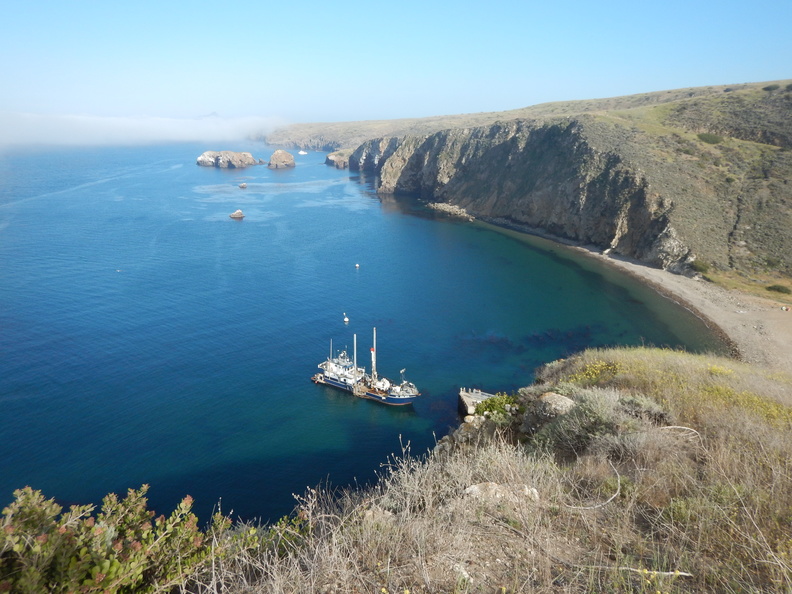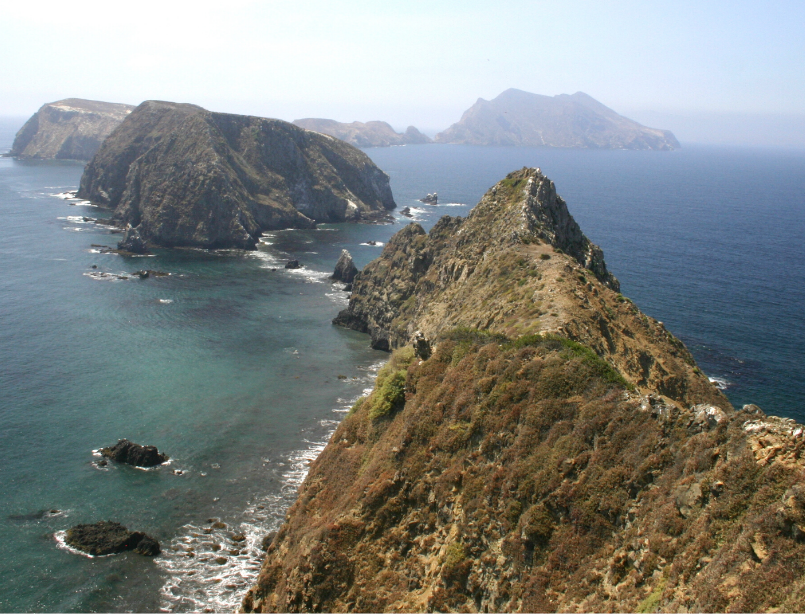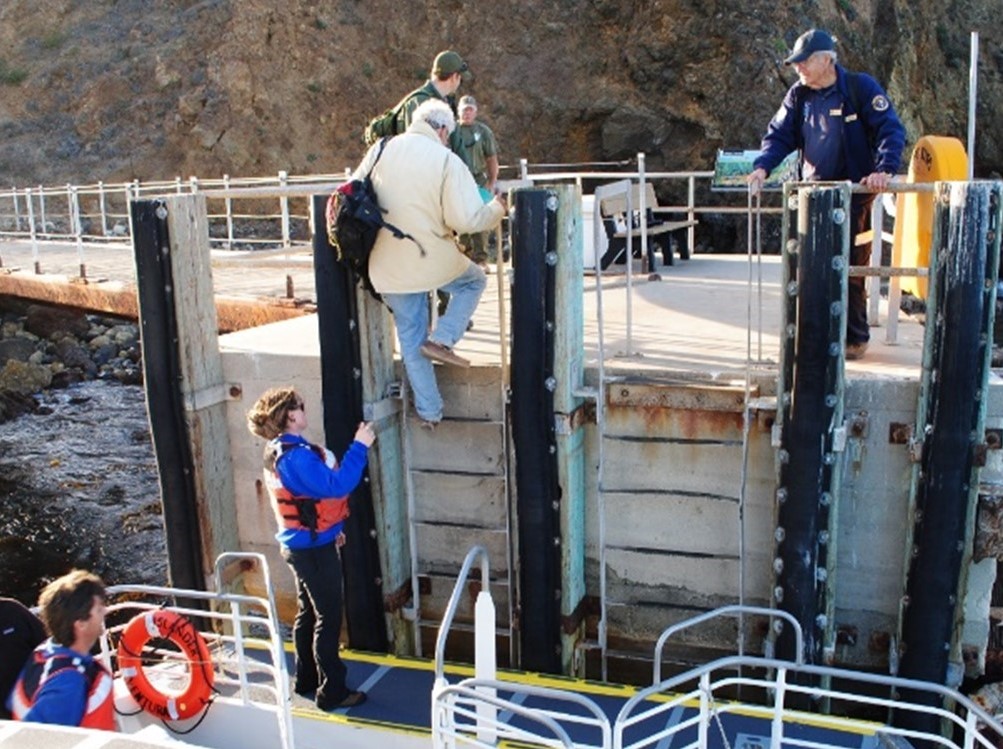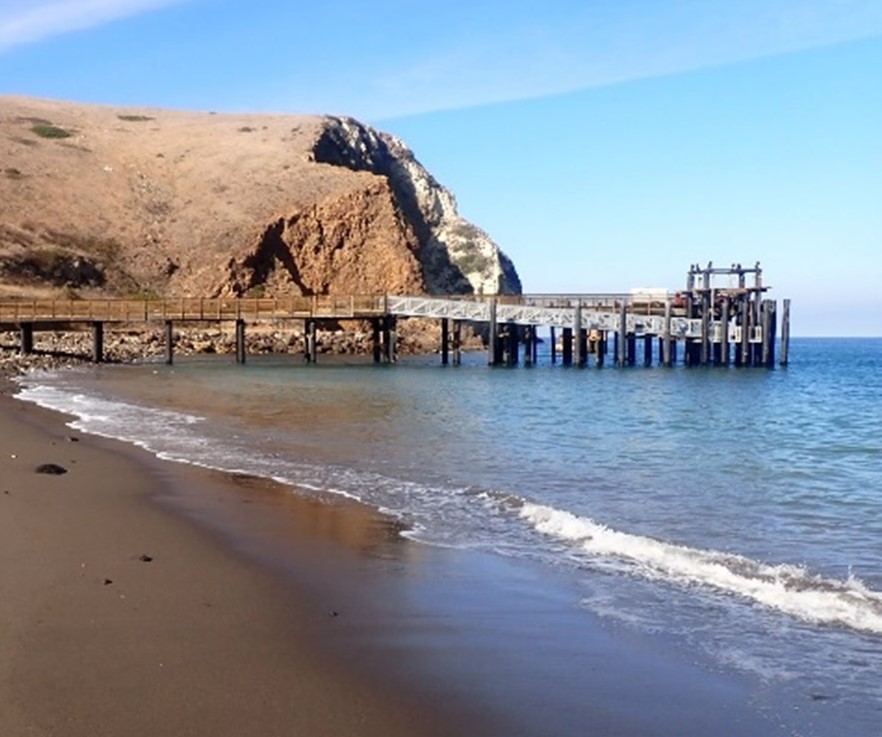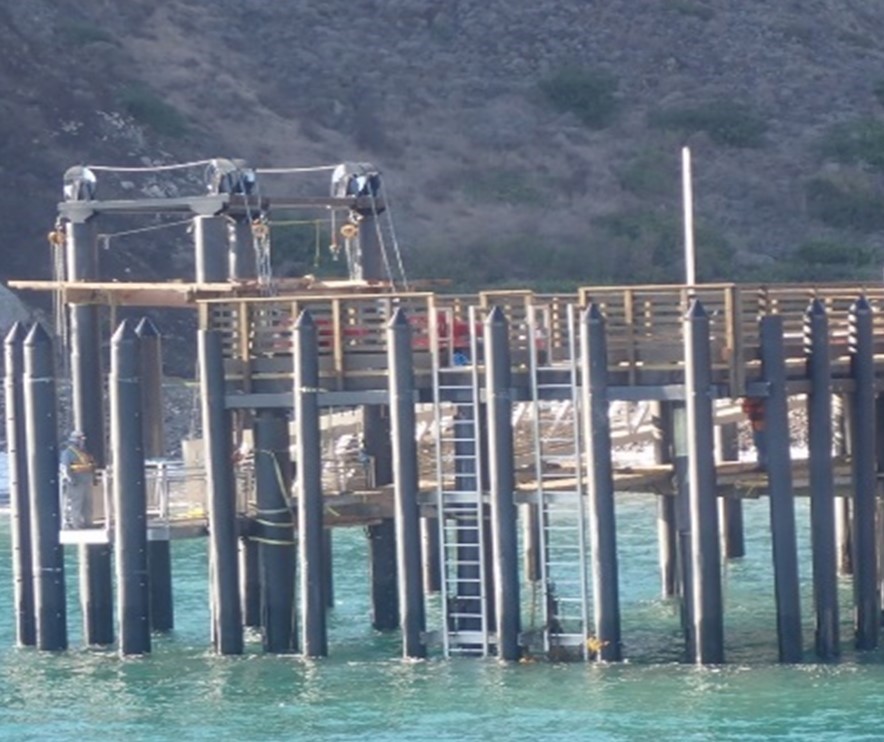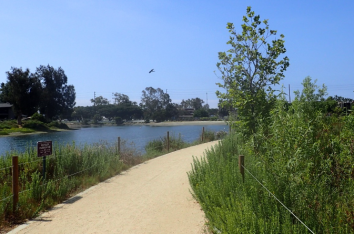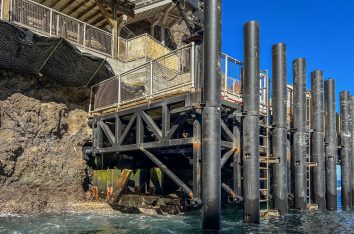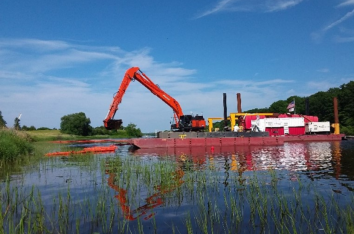Scorpion Pier Reconstruction
The National Park Service (NPS) replaced and relocated Scorpion Pier and its access road to improve park operations and visitor experience and provide safe access to Santa Cruz Island—the most visited island in Channel Islands National Park. Scorpion Anchorage, one of the major landing spots on the island, is a semiprotected ocean environment that poses challenges in making boat-to-pier transitions safely. The former pier was rapidly deteriorating due to wave action and corrosion and was only intended as a temporary, low-cost solution for providing urgent access to the Santa Cruz Island and the historic ranch district.
The project addressed the deficiencies with the pier and road by creating a new pier and access road approach in a better location. In addition, the project design included features to address flooding and future projected changes in sea level without the need for a full replacement, and it accommodated construction on an island and in a volcanic rock environment. Anchor QEA played a vital role in the planning and design process by providing services that included the following:
- Leading the development of the project Environmental Impact Statement (EIS)
- Managing all natural resource permitting and compliance
- Developing the project plans and specifications
- Developing innovative solutions for constructing the pier on an island and in volcanic rock
- Managing the project’s geotechnical program
- Modeling and developing solutions to adapt to changing sea levels
- Providing on-site construction inspection
The planning process lasted more than a decade, and construction was substantially completed in 2021. The project occurred within the overlapping boundaries of a national park, a national marine sanctuary, a state marine reserve, and Chumash tribal lands. Environmental compliance and permitting included completing an EIS (led by NPS), obtaining Coastal Zone Management Act consistency, undertaking a significant National Historic Preservation Act Section 106 process owing to the presence of cultural artifacts on site, and performing detailed Endangered Species Act and Essential Fish Habitat consultations. The project also obtained permits from the U.S. Army Corps of Engineers, Regional Water Quality Control Board, and Channel Islands National Marine Sanctuary. Detailed pre- and post-construction surveys for eelgrass and kelp coverage, as well as black abalone, were conducted to ensure there were no adverse impacts to sensitive marine organisms. NPS also employed marine mammal monitors throughout construction.
The project entailed several enhancements to the environment. First and most notably, the pier itself was carefully designed and constructed to adapt to rising seas, with the pier having the ability to be raised in the future without reconstruction due to materials and designs that maximize both longevity and ease of maintenance. Second, the relocation and improvement to the access road reduced the continuous need to repair and regrade the prior road. The ongoing repair and regrade activities occurred adjacent to extremely sensitive cultural areas; moving the road eliminated any potential for impact to these areas due to the road grading, proving to be a major project improvement. Third, the new pier greatly enhanced the use of the pier for cargo operations, which allows NPS to substantially reduce the need to use a landing craft approach to deliver any equipment to the park. Lastly, the innovative pile installation methodology eliminated the discharge of any drilling wastes to the ocean at this extremely sensitive site. The project thus provided a pier that enhances safety, operations, and visitor access and addresses the potential impacts of rising seas through innovative design and construction, all while ensuring no disruption to the marine and cultural environment.
- Market Sector
- Federal
- Location
- California
- Services


